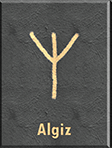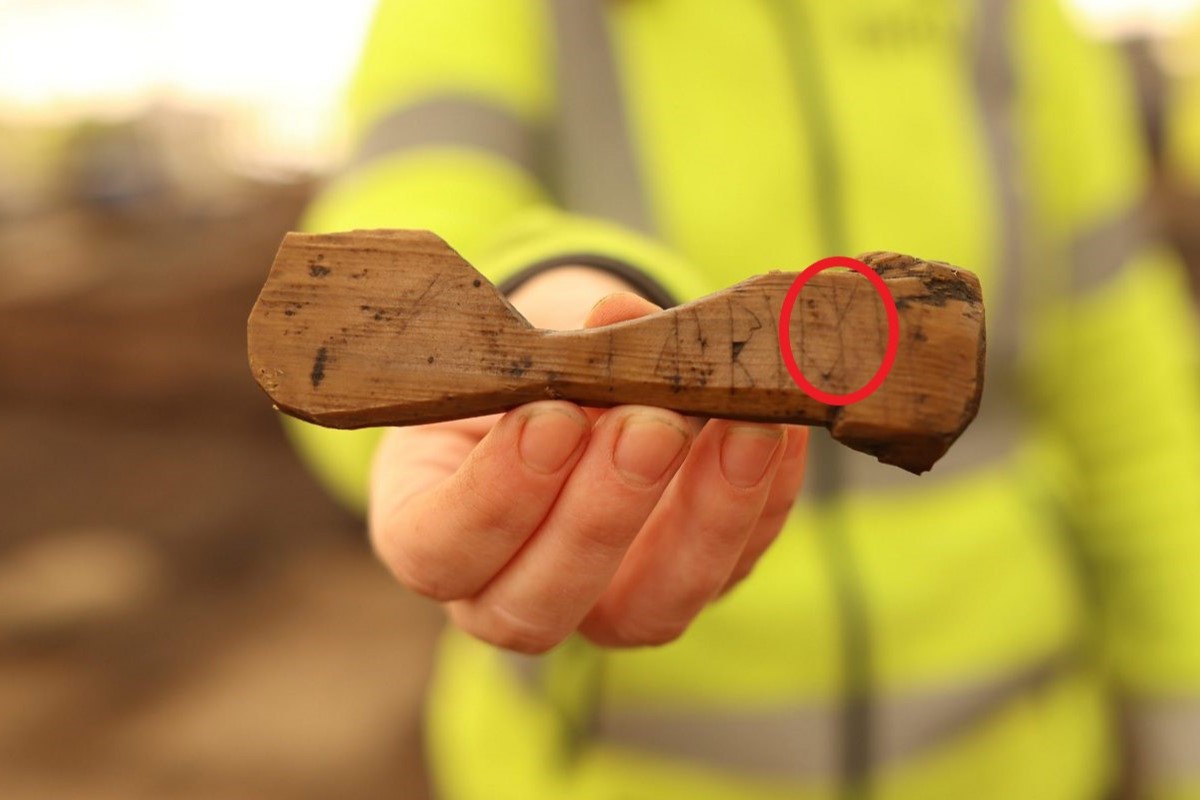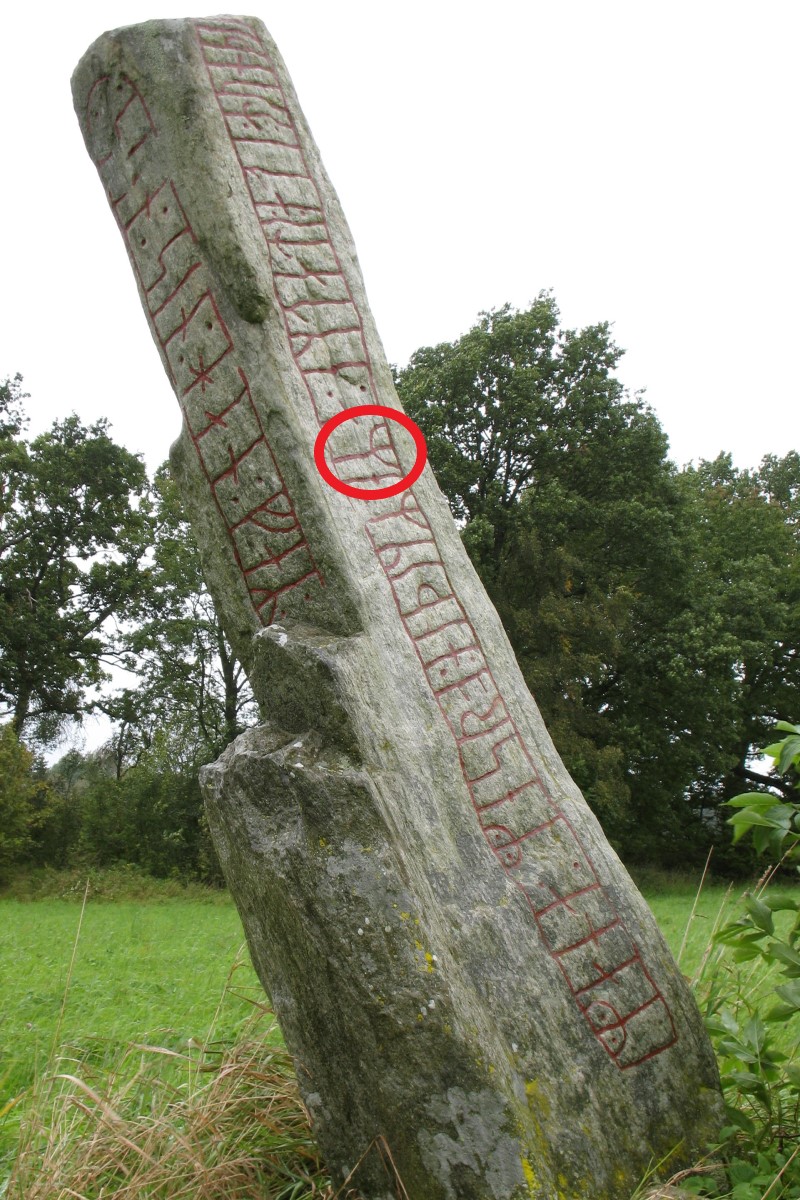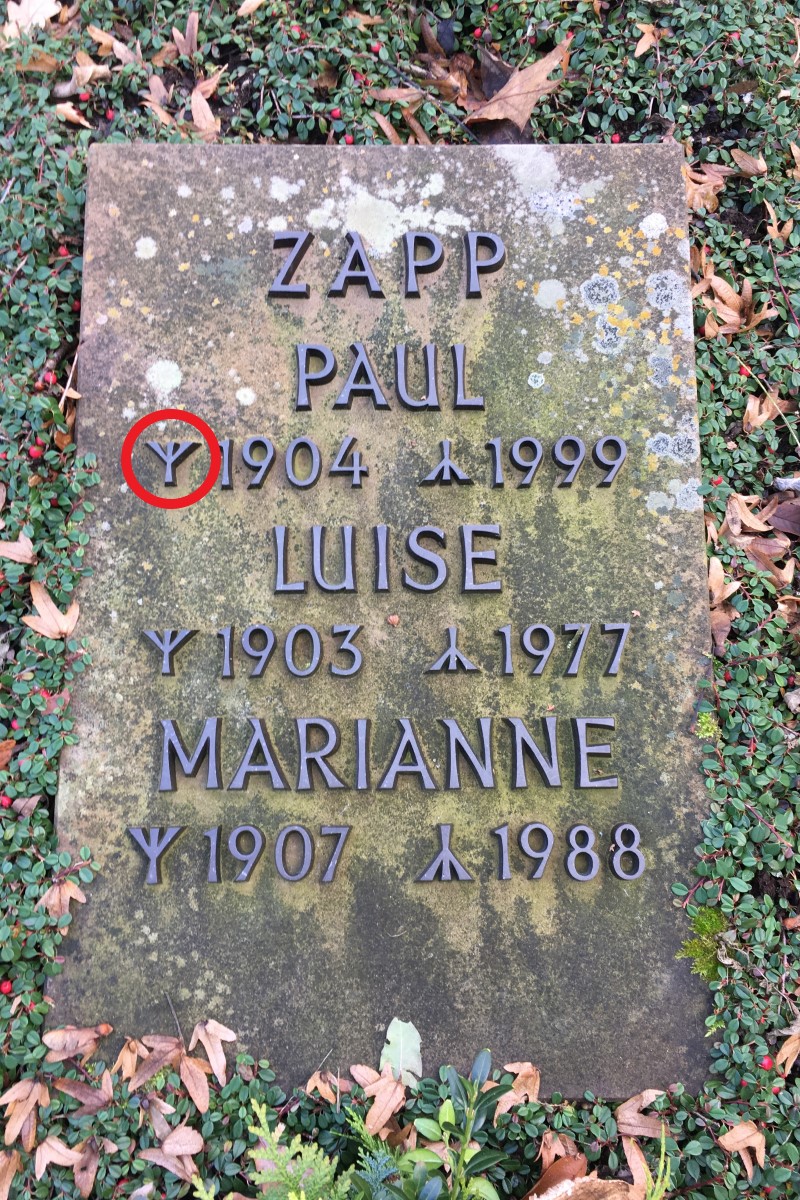Algiz Rune – Norse Runes Examined in Depth
How to pronounce or say the word Algiz
Algiz: The 15th Rune

Algiz: The Look and Sound
The algiz rune (ᛉ) is one of the most powerful protection runes in Norse mythology. Sometimes written as “Elhaz” or “Elhiz” instead, Its meaning is “elk”, but it also represents protection, defense, and prosperity. The elk was a sacred animal to the Norse people, and its antlers were said to have the power to ward off evil spirits. In runic form, the algiz rune looks like two crossed antlers, which symbolize the strength of the elk. The algiz rune can be used for protection against physical and spiritual danger. It can also be used to promote success, abundance, and good luck.
The precise pronunciation of the rune when spoken, or its use in normal speech is lost to time, but it can be inferred from what it would evolve into and translations into younger languages, that Algiz was pronounced “ull-gyiz”, it formed the “z” sound in many proto-germanic languages of the Bronze Age.

Algiz, and other Elder Futhark runes enscribed on a piece of elm wood
History and Usage
Algiz is the 15th character of the Elder Futhark alphabet, one of the oldest and most expansive rune alphabets. The earliest clear records of the complete Elder Futhark come from the 2nd century AD, and it was used throughout much of Europe by Germanic, Nordic and Celtic people until the 10th century AD. Algiz is one of the only runes in the Elder Futhark that has never been found to begin a word, it only occurs in the middle or end of a word, similar to the way “er” or “re” are common suffixes in modern English.
Aside from its use as a character in written language, by itself it was frequently used as a potent protection symbol, painted or carved in stone or wood, particularly near areas regarded as pure and capable of healing, like freshwater springs. In some interpretations, the Algiz rune was also associated with Valkyries and resurrection.
In modern times it is frequently presented as a luck or protection charm, either by itself or in conjunction with other Norse protection symbols such as the Vegvisir, or merged into other runes to combine the meaning, in an anachronistic form of “galdrastafir” or Icelandic stave writing. Whilst this merging of old and new nordic customs is fairly modern, to the true believer, there’s no reason to suggest combining runes with stave magic wouldn’t work, so give it a try!

A carved runic waystone, repainted to clearly show the Elder Futhark
Legacy in Language
As the Elder Futhark was gradually replaced with the Younger Futhark starting in the 8th century, Algiz evolved into “Eolx” or “x”, in old English. Eolx means “elk sedge” a thorny plant that grows in marshland. In the Younger Futhark the symbol became inverted (ᛣ) and became “Yr” or the “r” sound in Nordic countries from the 8th century onwards. Yr means “yew”, a type of tree associated with death and funerals.
This gradual evolution of the rune is part of the reason the modern English alphabet ends in XYZ, or Eolx, Yr, Algiz. The radically different symbolism of the rune in its upright and inverted positions (upright for Elk, life, health, inverted for Yew, death, funerals) led to its use in many European nations as a date of birth and date of death symbol on tombstones. This usage is called “totenrune” and is still practiced today in some countries.

By Grüne Minna – Own work, CC BY-SA 4.0, https://commons.wikimedia.org/w/index.php?curid=55503930
Algiz Frequently Asked Questions
What does algiz symbolize?
Algiz, commonly known as the z-rune, is a Norse symbol believed to have originated in Viking culture. It is commonly associated with protection, strong spiritual guidance and security from harm. To ancient Norse and Germanic cultures, algiz was seen as a sign of connection between humans and the divine – an association that has endured throughout history despite shifts in cultural hegemony. An algiz amulet, for example, was often gifted during weddings or house-warmings in pre-Christian North Europe to ensure good spiritual protection for its occupants. Today algiz continues to be a popular symbol refering to ancestral values such as inner strength and emotional support.
What does the Algiz rune do?
The Algiz rune is a Norse symbol that provides support and protection for those who call upon its power. It symbolizes divine forces and is commonly seen as a shield against negative forces, making it particularly popular in times of stress or danger. Those looking to invoke this rune are believed to receive guidance from the Gods to help reap success from difficult situations. It has also been used as a sign of strength and courage, making it ideal for times when we need to make bold decisions or take risks in order to succeed. Furthermore, Algiz eases the pressure of overwhelming odds by providing the strength and divine protection necessary to overcome any obstacles that may arise. In short, Algiz gives us the drive to keep pressing forward despite whatever life throws our way.
What does Algiz mean in divination?
Algiz is a rune associated with divination and has deep symbolic meanings. As a powerful symbol, algiz is often used to symbolize protection, support, guidance and divine intervention. Additionally, algiz suggests resilience in the face of danger and encourages us to tap into our spiritual strength. It can be used to start the journey of self-discovery and spiritual growth by inviting new life experiences for personal transformation. Ultimately, algiz challenges us to stay true to ourselves in times of uncertainty and doubt, ultimately leading us on a path towards growth and expansion.
